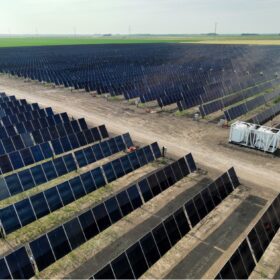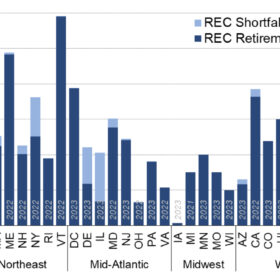The U.S. Treasury and Internal Revenue Service (IRS) have released additional guidance for accessing the domestic content bonus. The bonus is a 10% tax credit adder for solar, wind, and battery energy storage developers that install projects using U.S.-made components, adding to the 30% base investment tax credit.
The domestic content bonus applies to facilities and projects built using the required amounts of domestically produced steel, iron and manufactured products. To receive the bonus, all manufacturing processes for steel and iron components must take place in the United States. A statutorily required minimum percentage of the costs of the manufactured products and components of manufactured products that comprise a facility must be mined, produced or manufactured in the United States.
Projects are eligible for the full value of the bonus only if they meet the domestic content requirement and one of the following requirements:
- The project has a maximum net output of less than 1 megawatt of energy;
- Construction of the project began before January 29, 2023; or
- The project satisfies the Inflation Reduction Act’s prevailing wage and apprenticeship requirements.
IRS requires that structural construction components like steel and rebar foundation posts for solar projects are 100% U.S. manufactured. The rest of the materials, listed as “manufactured products,” must include domestic content for 40% of the cost, increasing to 55% over time.
Developers must collect three “direct costs” from equipment providers to calculate the manufactured product portion. The direct costs are the wages paid to factory workers, payroll taxes on those wages, and the amount paid to component suppliers for parts supplied directly to the factory.
However, attaining this information on direct costs has proved difficult. The new guidance in May 2024 provided important clarity on eligibility for the bonus, making this cost data easier to access.
Clean energy developers now have the option to rely on Department of Energy provided data on default cost percentages for an exhaustive list of manufactured products and their components. This safe harbor data can be used in lieu of obtaining direct cost information from suppliers
To achieve the bonus, a developer must simply add up the safe harbor cost percentages and reach the 40% requirement. The IRS document outlining the calculations can be found here. The table below outlines safe harbor costs for various solar project types.


In domestic content calculations for solar plus storage projects, the solar and storage assets are treated as one project.
Norton Rose Fulbright said a standalone grid-scale battery will not qualify for a bonus credit using the percentages in the safe harbor table unless the cells plus at least one other component are U.S.-made. In contrast, a battery with a nameplate capacity of 1 MWh or less can qualify if, for instance, the packaging and printed circuit board assemblies are U.S.-made.
“Following up on the President’s clearly stated intention Tuesday to promote and protect American manufacturing of the entire solar supply chain,” said Mike Carr, executive director of the Solar Energy Manufacturers for America (SEMA) Coalition. “We are also encouraged to see the Treasury Department recognize the centrality of ‘the IRA’s goals of incentivizing U.S. solar manufacturing, including solar wafer production’ as they work to develop the long-term guidance for this credit.”
This content is protected by copyright and may not be reused. If you want to cooperate with us and would like to reuse some of our content, please contact: editors@pv-magazine.com.









By submitting this form you agree to pv magazine using your data for the purposes of publishing your comment.
Your personal data will only be disclosed or otherwise transmitted to third parties for the purposes of spam filtering or if this is necessary for technical maintenance of the website. Any other transfer to third parties will not take place unless this is justified on the basis of applicable data protection regulations or if pv magazine is legally obliged to do so.
You may revoke this consent at any time with effect for the future, in which case your personal data will be deleted immediately. Otherwise, your data will be deleted if pv magazine has processed your request or the purpose of data storage is fulfilled.
Further information on data privacy can be found in our Data Protection Policy.